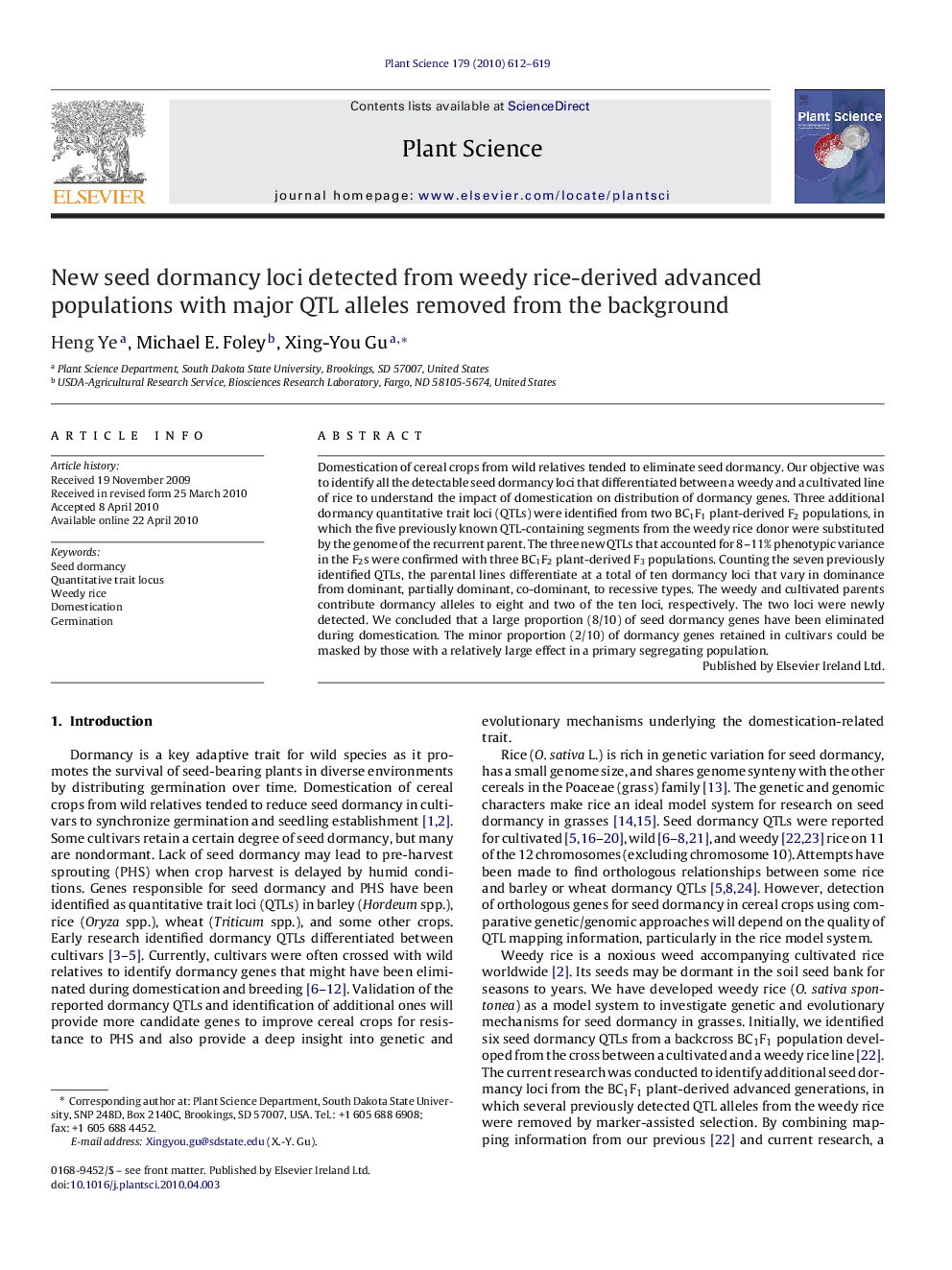| Article ID | Journal | Published Year | Pages | File Type |
|---|---|---|---|---|
| 2017717 | Plant Science | 2010 | 8 Pages |
Domestication of cereal crops from wild relatives tended to eliminate seed dormancy. Our objective was to identify all the detectable seed dormancy loci that differentiated between a weedy and a cultivated line of rice to understand the impact of domestication on distribution of dormancy genes. Three additional dormancy quantitative trait loci (QTLs) were identified from two BC1F1 plant-derived F2 populations, in which the five previously known QTL-containing segments from the weedy rice donor were substituted by the genome of the recurrent parent. The three new QTLs that accounted for 8–11% phenotypic variance in the F2s were confirmed with three BC1F2 plant-derived F3 populations. Counting the seven previously identified QTLs, the parental lines differentiate at a total of ten dormancy loci that vary in dominance from dominant, partially dominant, co-dominant, to recessive types. The weedy and cultivated parents contribute dormancy alleles to eight and two of the ten loci, respectively. The two loci were newly detected. We concluded that a large proportion (8/10) of seed dormancy genes have been eliminated during domestication. The minor proportion (2/10) of dormancy genes retained in cultivars could be masked by those with a relatively large effect in a primary segregating population.
